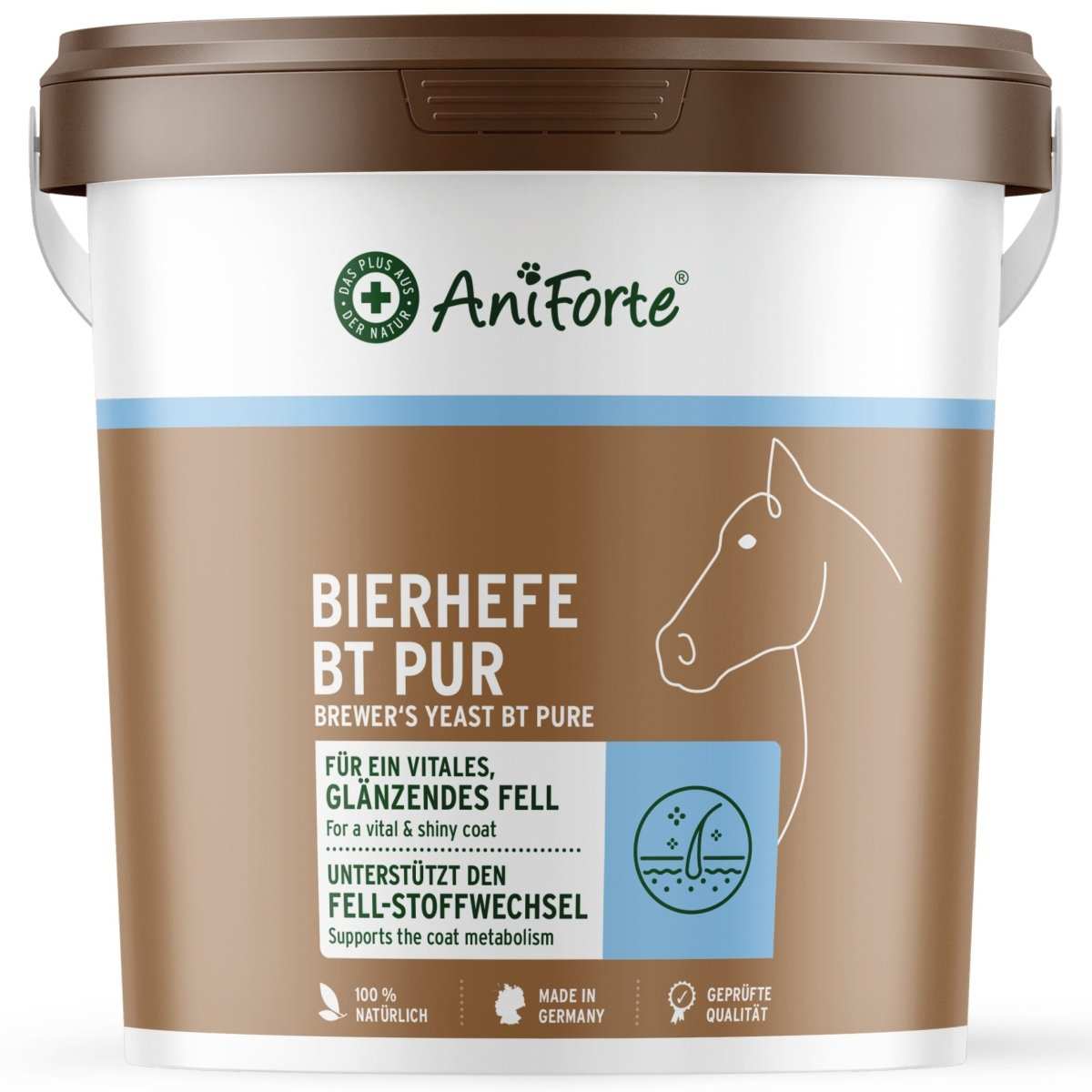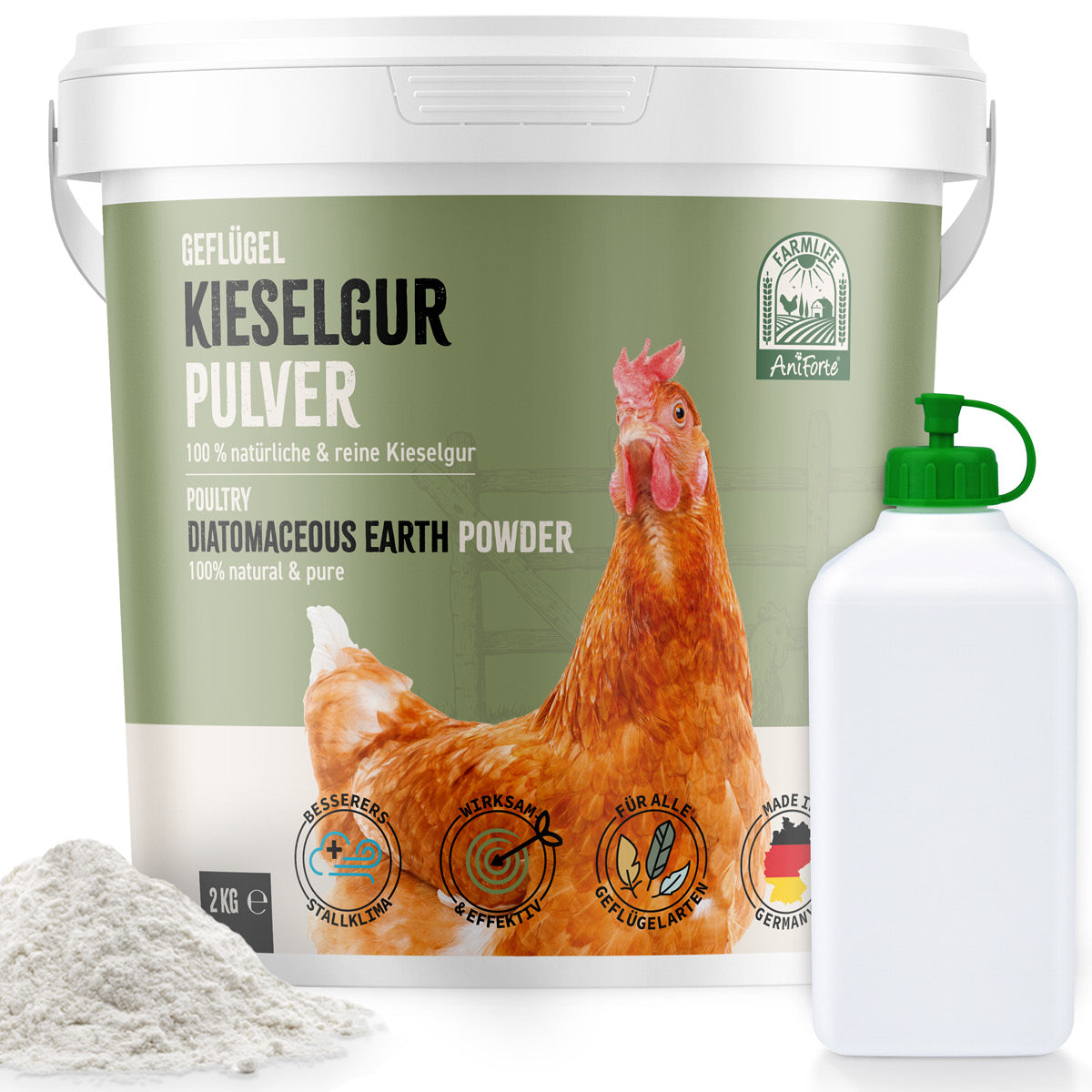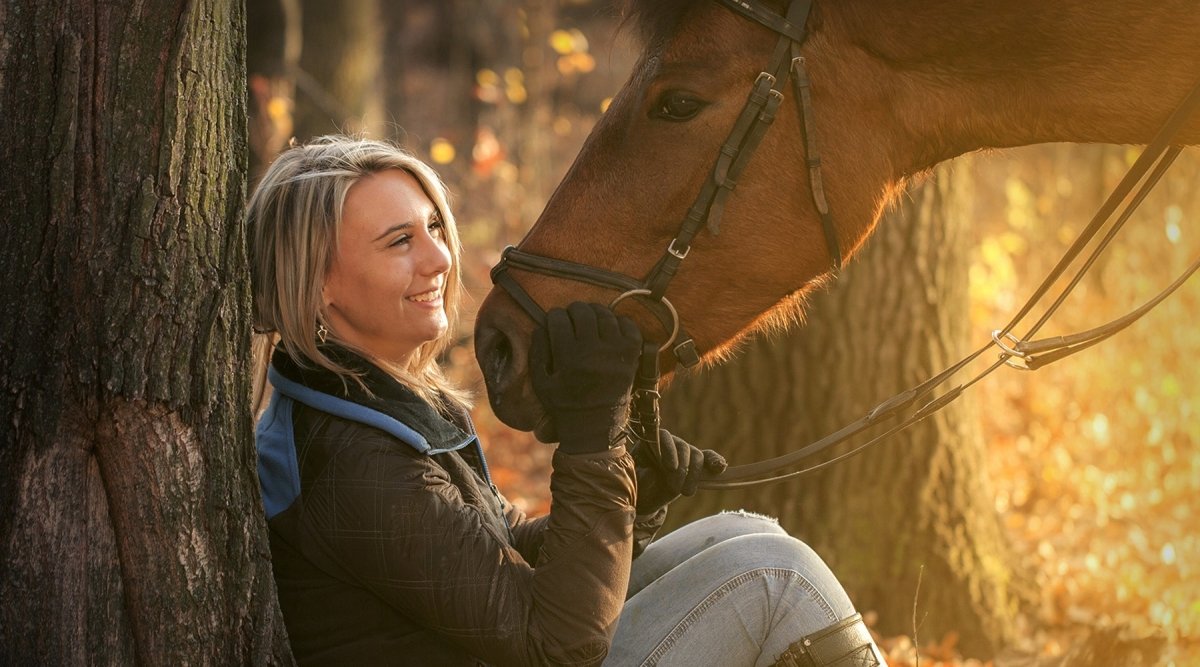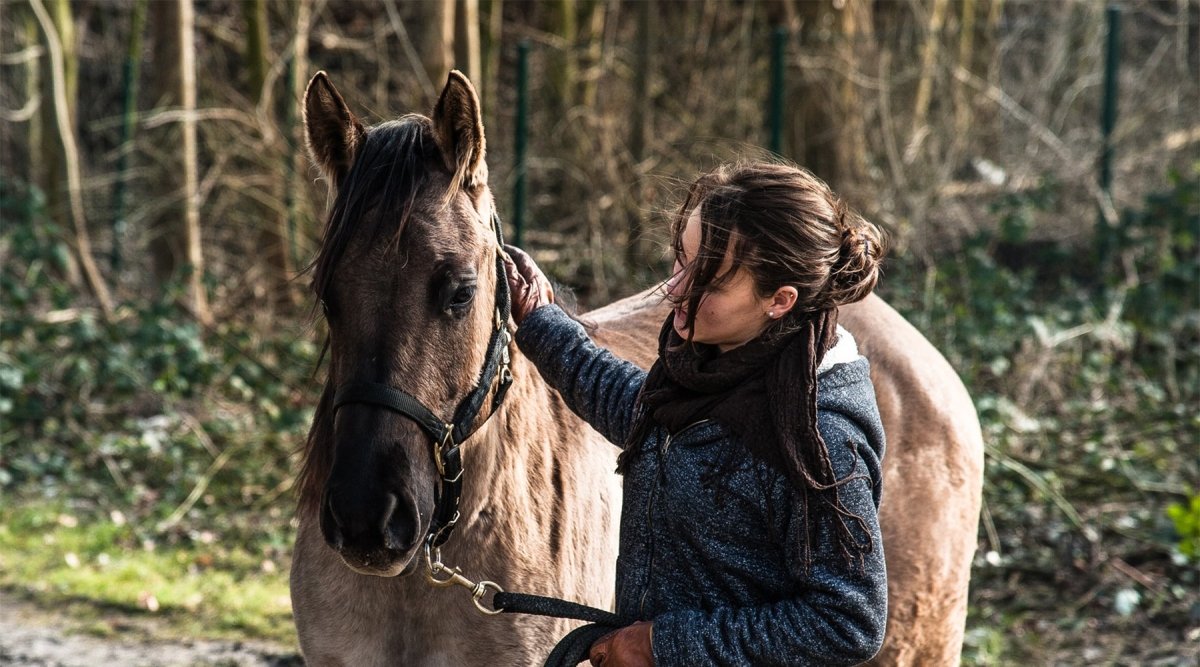Horses are true outdoorsmen, because they feel comfortable even in the snow and cold. Plenty of fresh air, exercise and variety is good for your favorite four-legged friend - regardless of the season. But there are some changes, especially in winter: Restricted movement, increased energy requirements and a change of coat. To keep your horse healthy and lively through the winter season, follow these tips.
Grazing with your horse in winter
Cold is not a problem for healthy and well-trained horses. The skin and subcutaneous fatty tissue have an insulating effect and the breathable coat provides additional protection. If your horse is standing in a box or has not had much exercise for a while, you should avoid a 'cold start'. It is best to let your four-legged friend warm up a little in the hall before going out to pasture.
Frost in the pasture may look nice, but eating frozen grass can cause stomach problems. Watery stools and colic can be the result. If your horse is experiencing problems, it helps to reorganization of the intestinal flora. If horses are used to grazing all year round and are therefore used to frosty grass, the risk is somewhat lower.
It is important that the horses do not go to the paddock hungry. Make sure they have a hearty breakfast of good hay first. Ideally, roughage should be available in a covered hay rack in the paddock. This way, your favorite four-legged friend won't even be tempted to help himself to the icy grass. This also prevents them from ingesting toxic substances such as leaves or needles from various trees.
Blackberry and raspberry bushes, on the other hand, can be nibbled on with a clear conscience, as the leaves are healthy and provide tannins and vitamin C. The cuttings from willow, fruit trees and birch are also great treats and keep them busy.
Watch out: If your horse gets less exercise in winter, there is a risk that its joints will 'rust' - especially in older horses. If it is not possible to do sufficient work with the horse, it is advisable to feed it a vital mix of ginger, devil's claw and rosehip to provide natural support for the musculoskeletal system and joints.
Caution: Tripping hazard - galloping on icy ground
In sub-zero temperatures, the ground becomes hard, which can strain sensitive horse legs. Old molehills or small holes can become tripping hazards, especially if they are not visible under the snow cover. Before the big frost comes, holes should be straightened if possible to avoid accidents.
If the pasture is icy, the horseshoes can be fitted with small Widia pins. This will significantly reduce the risk of slipping and falling on slippery ground.
Regularly test the condition of the ground in the pasture. If the ground is softened by thaws and wet conditions, deep holes can easily be created by playing and romping around in the pasture. Ideally, you should have a separate winter run from the summer pasture in winter to avoid this kind of damage.
Increased energy requirements & winter food
Part of the energy supplied by feed is converted into body heat by your horse. The colder it is, the more energy is used to keep the body temperature constant. Accordingly, your horse's energy requirements increase in winter.
Roughage
As there is no fresh pasture grass on the menu in winter, feeding roughage (hay and straw) is particularly important. The minimum intake is 1.5 kg of hay plus straw per 100 kg of horse weight per day. It is best to make the roughage available to your horse for free consumption. Make sure the quality of the roughage is as high as possible. Low-quality hay contains fewer nutrients and does not stimulate digestion sufficiently - the horse's intestines are dependent on a regular supply of roughage to keep the horse healthy. Make sure that your horse has access to fresh hay and straw every day.
Concentrated feed
Depending on the horse's workload and intensity of work, concentrated feed can be fed in winter. In addition toalfalfa pellets and muesli, the most common type of grain used here is oats. Hay cobs are a good alternative. Enriched with valuable herbs that support the metabolism and provide important but above all natural vitamins, minerals and trace elements.
Nettle herb and dandelion herb also help to boost the metabolism and provide your horse with natural vitamins, trace elements and minerals. Cold-pressed oils (e.g. linseed oil) provide energy and are good for the skin and coat. As a rule, your horse moves much less in winter, so adjust the amount of concentrated feed accordingly. Please note: Only feed your horse concentrated feed after it has grazed. Otherwise this can lead to digestive problems.
Mash
Mash is a welcome addition and change in winter - especially for older horses. The mix is made from wheat or oat bran, oat meal, boiled linseed or psyllium. psyllium seedssunflower seeds, supplemented with a few herbs and warm water, is easily digestible and stimulates digestion. In my experience, horses are always happy to receive a 'warm meal'.
Juice feed
Juice feed is not only a welcome change, but also provides additional important vitamins. Make sure that your horse also gets fresh food from time to time in winter: carrots, apples or bananas are particularly suitable. However, feed carefully, as the quantity is crucial here.
My tip: To strengthen your horse's natural defenses in winter, I recommend brewer's yeast or rose hip peel. Both contain valuable trace elements that are needed to build up the winter coat. Brewer's yeast also stimulates the appetite and improves condition. Rosehip peel is ideal as a healthy and low-calorie treat - even for light-fed horses. I explain why rosehip is a super fruit all round here.
The change of coat in horses
Your horse needs more trace elements (e.g. zinc, copper, selenium) and the fat-soluble vitamins A and E to build up its winter coat. The need for trace elements increases during the change of coat, especially in horses that have had little exercise in summer, older horses and competition horses.
Signs of a lack of trace elements and vitamins can be a dull or scaly coat, hoof brittleness and an increased susceptibility to infections, which is often accompanied by moulting. Through the supplementary feeding of natural vitamins, trace elements and minerals can easily counteract the deficiency.
With a balanced diet and hay and straw as roughage, your horse will have a healthy supply of all the important nutrients over the winter. If you are unsure how well your darling is 'equipped', a check-up for trace elements in the blood can show whether there are any deficiencies.
How do you keep your horse healthy and fit through the winter? What does your exercise and nutrition routine look like? Share your tips with me and other readers in the comments!





